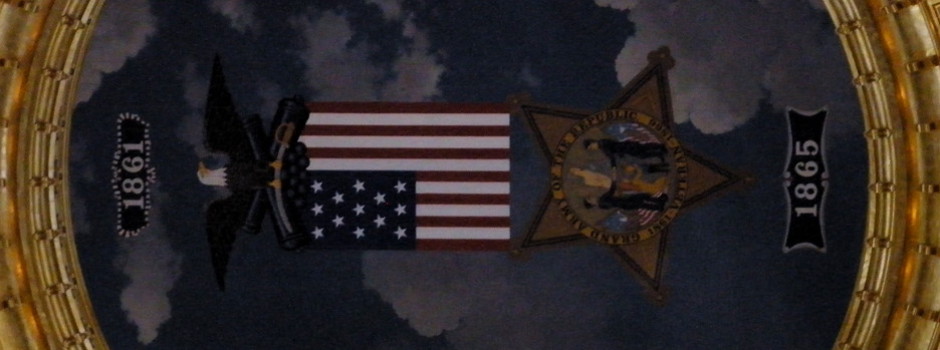Next week will be the 40th time bicycle riders have taken off on the Register’s Annual Great Bicycle Ride Across Iowa. Each year’s is different, but over the decades, some segments have been visited time and time again.
The official site has a collection of overnight city listings and short histories of each ride, but doesn’t go into the detail of the routes followed. I looked those up.
I took out a fresh map and a pack of markers to start retracing the routes as printed in the paper over the years. I did them in reverse, most recent to earliest. When a route ran into a previously used road, I let the previous color take precedent. (All of this is easier than trying to go point-to-point on the computer.) This got a little complicated, though, when those re-retraced routes diverged and I lost track of what was where. This does not account for in-town routes, just point-to-point, and may not cover last-minute modifications.
Here are some of the informational items that appear once all the lines have been drawn. The facts below are in no particular order.
- RAGBRAI has been to approximately 635 of Iowa’s 946 incorporated places — two-thirds of the towns in the state.
- Many roads used in the first five to ten years have never been touched again. This could be due to a variety of things, including the massive growth of the ride or growth in vehicle traffic on those or nearby roads.
- The growth of the ride also probably accounts for why Akron was only used as a starting point in 1982. The ride has not started in a town on the Big Sioux River aside from Sioux City since 1998 (Hawarden), and before that 1985 (Hawarden again); Rock Rapids, Sioux Center, and Le Mars are used for those jumping-off points instead.
- Four-lane roads are, of course, no-go zones except when US 6 was used between Adel and Waukee in 2006.
- US 6 and US 59 are the only US routes in Iowa that have seen extensive ridership.
- On a related note: Old US 20 in Delaware County and old US 30 between Ames and Tama are crucial components to getting across the state.
- Only visit to Allamakee County and only time the ride ended in Lansing: 1977
- Only visit to Louisa County: 1979
- Only city on the 1973 route not revisited since: Prairie City
- Every city on the 1975 and 1980 routes was revisited later.
- Onawa was used as a starting point three times in the first 15 years but twice in the last 25.
- Northern Benton County was visited three times in the early years (’78, ’83, ’85) but hasn’t been back on the route until this year.
- A bituminous road southeast of Oxford doesn’t appear on the state map, but has been used often.
- Stanwood, Clarence, Lowden, Wheatland, and Calamus, strung along US 30 in eastern Iowa, feel a little left out. It’s possible to go through all but the first and last on that list without touching 30, but it’s never been done.
- Every city on IA 3 east of Oelwein has also missed the boat. Dubuque County has too many hills.
